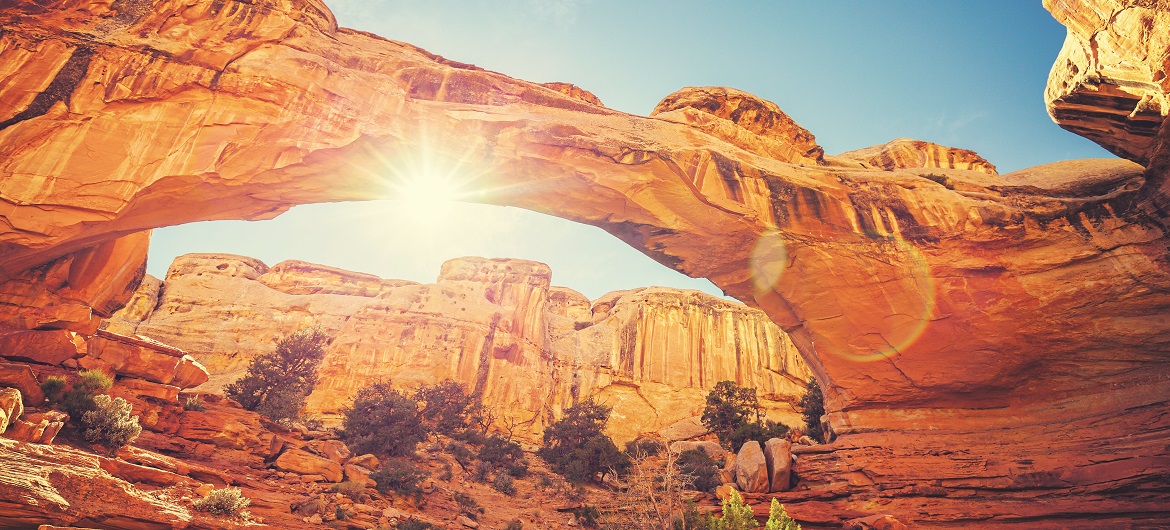
By Lynn & Cele Seldon
Visiting America’s national parks is one of our nation’s greatest privileges and pleasures. The awesome beauty and wildlife, preserved for all to enjoy, continue to attract thousands of visitors annually to these special places.
Today, there are 59 National Parks in the National Parks Service and they are located throughout the contiguous United States, Alaska, Hawaii, the U.S. Virgin Islands, and American Samoa. The 59 national parks proper are divided into eight regions.
Here’s an overview of all 59 national parks by region:
East
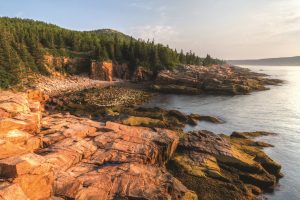
Rocky shore at Acadia National Park
Most of the earliest National Parks were located in the west and it wasn’t until the establishment of Maine’s Acadia National Park in 1919 that the eastern region of the country had a national park. Called Lafayette National Park until it was changed in 1929, Acadia is located on Mount Desert Island on Maine’s rugged coastline. John D. Rockefeller Jr. donated about 11,000 acres of his land for the park, as well as the one-time carriage roads that are now so popular with hikers and cyclists.
Heading south, Virginia’s Shenandoah National Park is next. The stunning Skyline Drive runs 105 miles through the park from north to south and is a great way to experience it year-round but, fall colors mean leaf-peeping for lucky visitors.
This also is true of Great Smoky Mountains National Park, which straddles North Carolina and Tennessee, and is the nation’s most-visited national park and features dramatic mountain views and lots of history. The loop drive in Cades Cove can get quite crowded during the fall and other times, while most of the rest of the sprawling park is less-crowded. It’s one of the nation’s few large national parks that doesn’t charge an entrance fee.
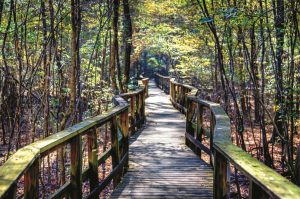
Congaree National Park
South Carolina offer up one of the more recently created (2003) National Parks at Congaree National Park. Featuring stark bald cypress trees and lots of trails through swampland, Congaree is just 20 miles south of the Palmetto State’s capital of Columbia.
South Florida features three unique national parks. Of course, there’s sprawling and can’t-miss Everglades National Park and its incredible wildlife and boat tours. There’s also Biscayne National Park (mostly made up of the waters of Biscayne Bay and the Atlantic Ocean) and unique Dry Tortugas National Park, which is about 70 miles west of Key West. It is best reached by frequent ferry service and features historic Fort Jefferson and world-class snorkeling.
To the southeast of Florida in the United States Virgin Islands, St. John’s United States Virgin Islands National Park also has crystal-clear snorkeling, scuba diving, lots of hiking trails, historic ruins and much more.
Back on the mainland, the eastern region’s final National Park is Kentucky’s Mammoth Cave. It’s the world’s longest known cave system, with lots of ranger-led cave tours. The park is celebrating a milestone of its own—guided public tours were first offered at Mammoth Cave in 1816, 100 years before the National Park Service was established.
Midwest
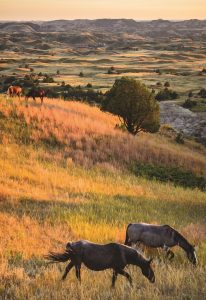
Theodore Roosevelt National Park
The Midwest region features a half-dozen distinct options. First, there’s Ohio’s Cuyahoga Valley National Park, which includes farms, parks, attractions, towns and more within its unique boundaries.
Michigan’s Isle Royale National Park is made up of a large island and many smaller ones that are only reachable by boat during a relatively short visitation season. To the west, Minnesota’s Voyageurs National Park features four main lakes and many smaller ones, with waterlogged activities like canoeing the main focus.
Further west, North Dakota’s Theodore Roosevelt National Park is the only National Park named for a person and it’s fitting because, as mentioned, Roosevelt was one of the earliest proponents of preserving America’s wild spaces. To the south, South Dakota’s Badlands National Park and Wind Cave National Park feature unique landscapes above and below the surface.
South Central
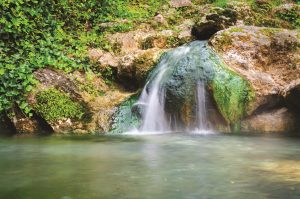
Hot Springs National Park
This region of National Parks features just four. Hot Springs National Park in Arkansas is another truly unique park—it is the smallest National Park and is both a city and a park that features historic Bathhouse Row and its old bathing and healing establishments.
In Texas, three options await. First, there’s remote Big Bend National Park, where the Rio Grande River carves a “big bend” on the United States-Mexico border. To the park’s north, Carlsbad Caverns (Will Rogers called it, “The Grand Canyon with a roof on it.”) and Guadalupe Mountains National Park (with Guadalupe Peak, the tallest mountain in Texas at 8,749 feet) make for an easy National Parks Texas two-fer.
Southwest
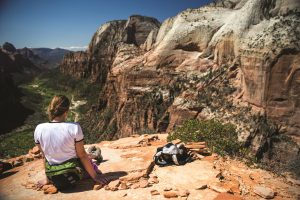
Zion National Park
The vast Southwest region features 11 national parks, including famed Grand Canyon in Arizona, which also spreads into Nevada—where there’s also Great Basin National Park and its 12-mile Wheeler Peak Scenic Drive, as well as part of Death Valley National Park. While Grand Canyon’s South Rim can be busy, the North Rim is much less visited. Other National Parks in Arizona include the fossilized Petrified Forest west of Flagstaff and Saguaro near Tucson, which highlights the saguaro cactus—known as the “kings of cacti.”
Up in National Parks-rich Utah, the options abound and many parks can be visited in one extended trip. The options include: Zion (famed for its cliffs); Bryce Canyon (with its castle-like red rocks); Capitol Reef and its 100-plus-mile tilted rock spine; Canyonlands, where desert and water stunningly intertwine; and Arches (with more than 2,000 natural arch formations). From stunning canyons to unique foliage and more, these five destinations make Utah a must-see for National Parks collectors.
Along with Colorado’s Mesa Verde National Park and its Puebloan ruins, the Centennial State’s Black Canyon of the Gunnison National Park also is part of the Southwest region and it protects about 14 stunning miles of the often-raging Gunnison River.
Rocky Mountains
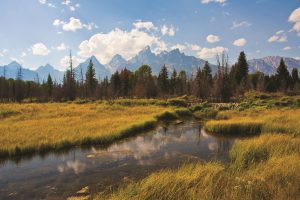
Grand Teton National Park
Colorado features two other National Parks in the Rocky Mountains, including the tall sand dunes of Great Sand Dunes National Park and the tall mountains of Rocky Mountain National Park. The park was established a year before the National Park Service was created.
Next, Wyoming’s wonderfully craggy Grand Teton National Park can be combined with a visit to the fabled Yellowstone National Park. Yellowstone actually shares its borders with neighboring Idaho and Montana. Grand Teton features the Snake River and a dominating mountain-filled skyline, while Yellowstone is famed for Old Faithful, other geysers, bison, and more.
Finally, situated way up in northwestern Montana and straddling the Continental Divide, Glacier National Park features two unique sides. There’s a dry eastern front and a wet maritime west side.
Pacific Northwest
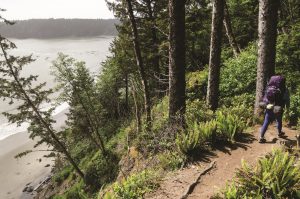
Olympic National Park
With a half dozen diverse National Parks, Washington State, Oregon and Northern California make up the Pacific Northwest region. Washington’s three offerings are all within easy driving distance of Seattle and include majestic Mount Rainier (known as the “American Alps”), Olympic (including a temperate rainforest), and North Cascades, with the glacial glories of the Pacific Northwest’s Cascade Range.
In Oregon, Crater Lake National Park is the deepest lake in the nation (almost 2,000 feet). Next, Northern California’s offerings include Redwood’s towering trees on the coast, and little-visited Lassen Volcanic National Park features the 30-mile Lassen Volcanic National Park Highway.
Pacific Southwest

Yosemite National Park
There are nine parks in the Pacific Southwest region including several in Southern California. The Golden State’s include: Yosemite (featuring iconic El Capitan); Pinnacles (currently the nation’s newest National Park, established in 2013); Sequoia (home some of the world’s grandest trees and the highest mountain in the Lower 48—Mount Whitney) and adjacent Kings Canyon (featuring the General Grant sequoia, the second largest tree in the world); daunting Death Valley (shared with Nevada); Joshua Tree, where two deserts converge; and undeveloped Channel Islands National Park west out of Los Angeles in the Pacific.
Much further out in the ocean, the Hawaiian Islands have two National Parks, with Hawai’i Volcanoes and its active fiery volcanoes located on the Island of Hawaii and Haleakalā and its dormant volcano situated on Maui. The Pacific Southwest region also includes the National Park of American Samoa, which is 2,600-plus miles southwest of Hawaii and the furthest distance for any National Park on the mainland.
Alaska
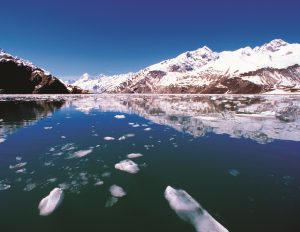
Glacier Bay National Park
The Last Frontier has an incredible eight sprawling National Parks. Denali has to be at the top of the list, thanks to North America’s highest peak and abundant wildlife. However, many other options await Alaska visitors, including waterlogged Glacier Bay and Kenai Fjords, glacier-ridged Wrangell-St. Elias, Lake Clark (generally reached by small planes), salmon-laden Katmai and Gates of the Arctic (the size of Switzerland) and the true wilderness of Kobuk Valley way up above the Arctic Circle.
For More Information
The National Park Service (NPS) has two great websites to help plan park visits: www.nps.gov and www.findyourpark.com.
To plan your next stay near one of America’s fantastic National Parks, visit our website, thousandtrails.com.

